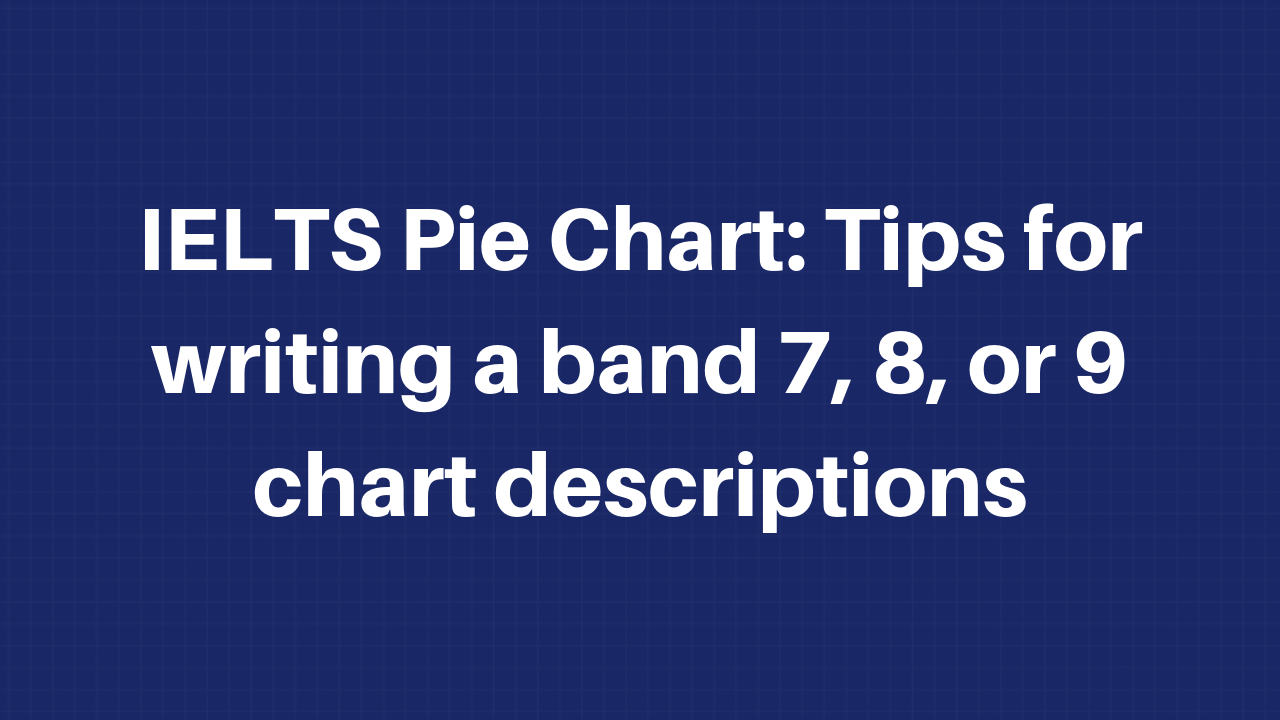Describing pie-charts is one of the most common questions in IELTS Academic Writing Task 1. The perfect description must contain all the information explained in clear language. Since it is an analytical writing, the description must contain a range of contextual vocabulary. Let us see how we can achieve this!
IELTS Academic Writing Task 1 Format
In Writing Task 1, you either will have to describe facts or figures presented in one or more graphs, charts or tables on a related topic; or explain how a machine, a device or a process works, by looking at the given diagrams. For this you should adopt academic or semi-formal/neutral styles and include the most important and the most relevant points in the diagram. Some minor points or details may be left out.
Since time is a big factor, you must spend no more than 20 minutes on this task. You will have to write at least 150 words and will be penalised if the answer is too short. However, writing more than 150 words is acceptable.
This task assesses your ability to identify the most important and relevant information and trends in a graph, chart, table or diagram, and to give a well-organised overview of it using language accurately in an academic style.
You will be assessed on:
- Task achievement
- Coherence and cohesion
- Lexical resource
- Grammatical range and accuracy.
How to Structure Your Response to a Pie-Chart?
Whenever you are asked to comment on a pie-chart and describe the data you must remember that it must have a concrete structure. We recommend you to have at least three sections:
- The Introduction
- The overview
- The Body Paragraph
The Introduction is where you paraphrase the information in the question. This is usually 1 or 2 sentences long, where you introduce your chart and mention 2 important things: what your graph shows and for what period of time.
The overview is where you present the key features of the chart. You can mention 3-4 important features here.
The body paragraph should address the specifications in the chart. You can divide this into 2-3 more paragraphs.
Model Answer
Here is a model answer for Band 9:
Q. Summarise the information by selecting and reporting the main features, and make comparisons where relevant.
Source: Cambridge English IELTS Past Papers.
Answer:
The pie charts compare the proportions of Italian and Yemeni citizens in three age groups in 2000 and projections for 2050.
It is clear that Yemen had the younger population in the year 2000, and the same is predicted for the year 2050. The populations of both countries are predicted to get older over the 50 year period.
In 2000 just over half the Yemeni population were under 14, compared to just over 14% of Italians in the same age group. Only a very small percentage of people in Yemen were over 60 at 3.6%, in contrast to nearly a quarter of the Italian population. The largest group for Italy was the 15-59-year-olds with just over 60% while Yemen had 46.3% of its population in this category.
Yemen’s average age is set to increase with the proportion of over 60s increasing by just over 2% and the middle group rising by 11%, leaving the youngest group with a decrease of nearly 13%. It is envisaged that by 2050 the number of people in Italy over 60 will jump to 42.3%, the percentage of those in the youngest bracket will drop to 11.5% and the share in the middle category will decrease to 46.2%.
A Band 8 or Band 7 answer will have much less contextual vocabulary and the paragraphing won’t be as clear.
Tips to Write About Pie Charts
In order to answer this task effectively, we need to ask ourselves some questions beforehand:
- What kind of chart is it?
- What does the title say about the chart?
- What information is contained on both charts?
- What are the units of measurements?
- What groups are compared?
- What is the time period?
- What is the most obvious thing that the data shows you?
- What is the most important or significant piece of information displayed?
- Can any comparisons be made?
- Is it a static chart or dynamic chart?
Once you have answers to these questions, your approach will be much easier. As you begin writing your response, here are some points you must remember:
- Always highlight the largest and the smallest proportions.
- In case you are given two pie-charts, you must highlight the changes.
- Use appropriate vocabulary to describe the charts. For example: accounts for, comprises of, less than a quarter, majority etc.
Conclusion
To nail a pie-chart description all you need is some relevant vocabulary and a good structure. If you plan your writing well, it will be very easy for you to achieve a Band 9 score.








